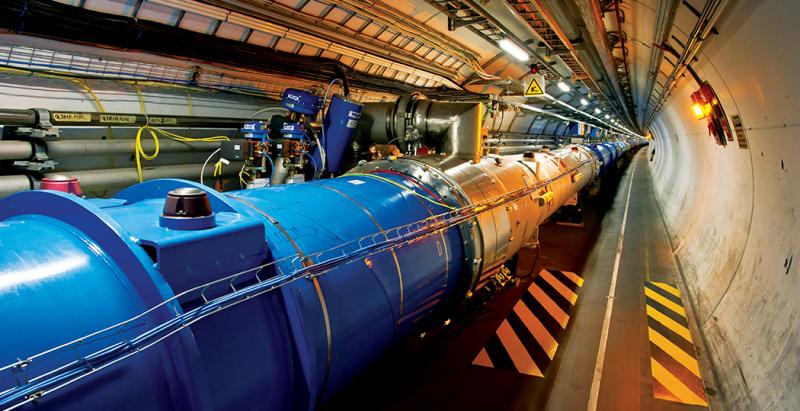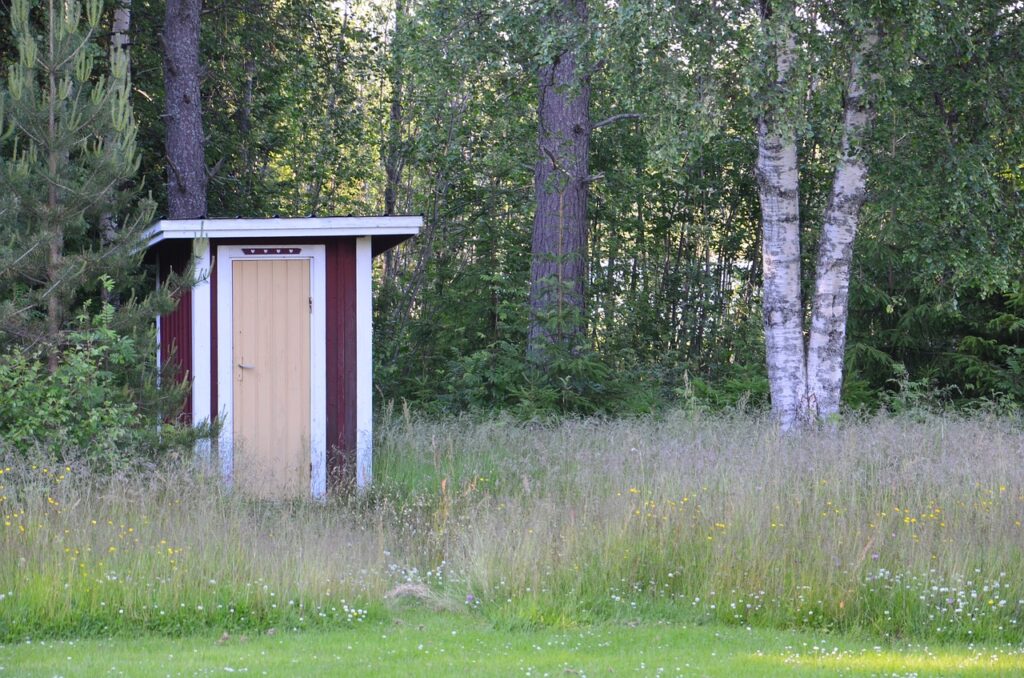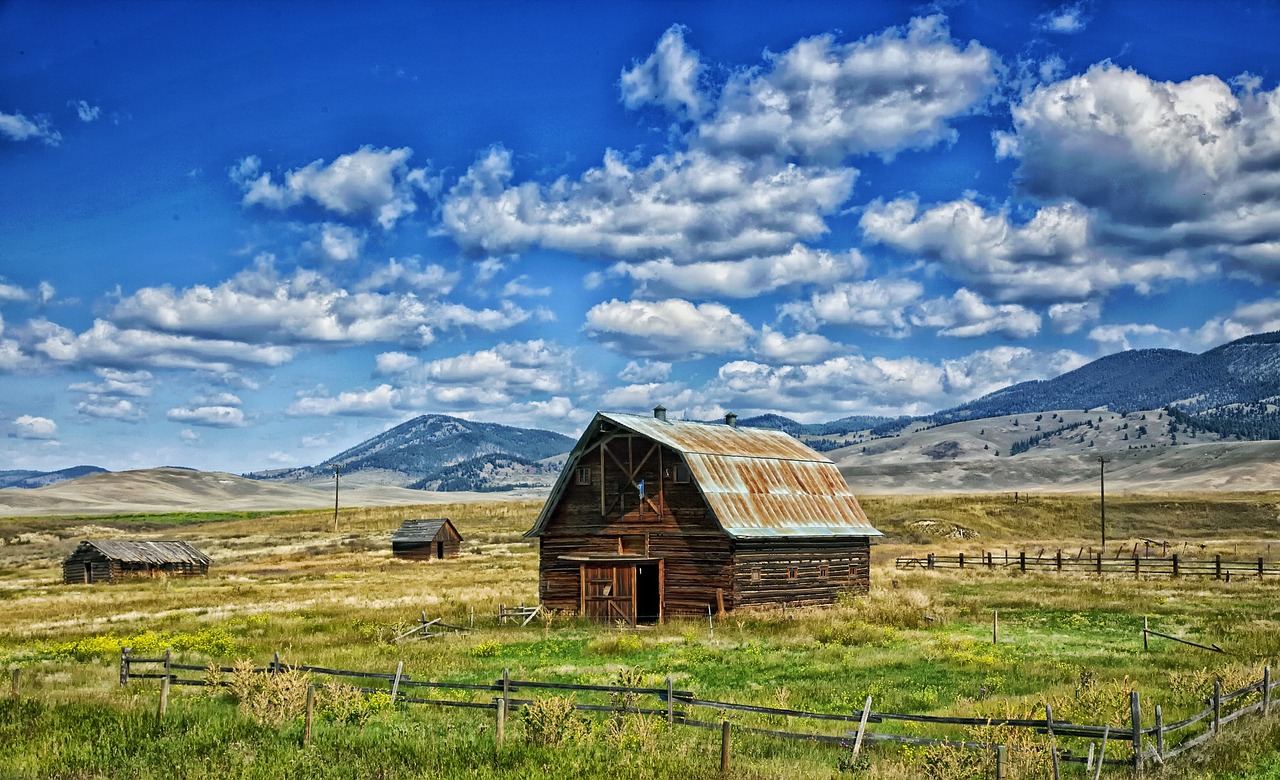What’s an inverse femtobarn?
The definition of an inverse femtobarn is a little complicated, and physicists don’t often bring this term up.
However, the inverse femtobarn is easy to explain, has some interesting history, and some comical related terms too.
The inverse femtobarn is a unit of measurement, just like a meter or a second, but while those measure length and time, the concept that the inverse femtobarn measures is a little more abstract.
Specifically, it’s the effectiveness of a particle collider – such as the Large Hadron Collider (LHC) at CERN in Europe, or the Tevatron at Fermilab in Illinois.
But just telling you that doesn’t provide the full explanation. So let’s start at the beginning…
World War II: The Los Alamos Countryside
We all know how World War II was ended – in a spectacular and frightening display of engineering known as the atomic bomb.
The theories behind this bomb were frantically pieced together at a specially built laboratory in Los Alamos, NM. Of course, this research was extremely confidential, and in this era of cloaks and daggers and secrets on microfilm, precautions needed to be taken so the Axis powers wouldn’t steal this weapon for themselves.

Scientists at this time were experimenting with uranium atom collisions. While the nucleus of an atom is very small, each element’s atom is a different size since it’s made up of more or less protons and neutrons.
The nucleus of a uranium atom, compared to other elements, is gigantic. And you’ve surely heard of the phrase “it’s as big as the broad side of a barn!”
We do not know the identity of the specific scientist who managed to link together uranium atoms and barns as both being relatively large compared to their surroundings, but it happened.
When sending descriptions of their experiments back and forth, scientists tried to avoid mentioning uranium. That’s because these messages could be caught and read by spies, and if Nazi scientists used uranium-related terms as clues, they could figure out what our patriotic researchers were up to.
So as a code, our scientists used the word “barn” to mean a precise unit of area: 10-24 cm2, or 10-28 m2.
It’s hard to say if this worked or not. Of course, many of our Los Alamos secrets ended up being given to the Soviets anyway by communist spy Klaus Fuchs.
But I’d like to imagine a couple Nazi scientists scratching their heads reading our codes: “Warum sind die Amerikaner studieren Scheunen???”
(Why are the Americans talking about barns???)
Through scientific osmosis after the war, “barn” stopped being a code word and became an accepted unit in the lexicon of research. It’s not an official SI unit, but it is officially accepted by their standards since physicists continue to use it regardless.
So that’s a barn – just a unit of area, like an acre or a square foot, but so much smaller – but what about the “inverse femto” parts?
Inverting The Femtobarn
Let’s get one explanation out of the way first.
We’re all familiar with the “hour” unit of time. And you may remember from basic algebra that any fraction with a denominator (bottom number) of 1 is simply equal to the numerator (top number).
For example,
- 1 / 1 = 1
- 6 / 1 = 6
- 555 / 1 = 555
- x / 1 = x
- etc.
In the same line of thinking, 1 hour / 1 is also equal to simply one hour.
We’re all also familiar with the unit of speed, miles per hour. Expressed mathematically, that’s miles / hours – if you travel 60 miles in 2 hours, you’re traveling at 60 miles / 2 hours = 30 miles per hour. If you travel 50 miles in 1 hour, that’s 50 / 1 = 50 miles per hour.
The unit is “per hour”, which means that hour is on the bottom of the fraction.
Scientifically speaking, switching the top and the bottom of a fraction is called inverting it.
1 / 5 is the inverse form of 5 / 1, and 5 / 1 is the inverse form of 1 / 5.
All it is, is flipping it around.
So what’s an inverse barn? It simply means that there’s something “per barn”.
We just haven’t gotten to what quite yet.
Changing a barn to a femtobarn is simply making it much, much smaller. A barn is already small at 10-28 square meters, but a femtobarn is so, so, so, so tinier: 10-43 square meters, or 10-39 square centimeters. I
t’s nearly impossible to even imagine such a small unit of area.
Think about the area of a city block, then about the area of a cross-section of one of the hairs on your head, and then extrapolate a million times smaller, and then another million times, and then a little more yet.
It’s a very small area.
But this brings us to the inverse femtobarn. It’s a number of something per tiny little area.
So What Is It Used For?
The inverse femtobarn is used to measure effectiveness of particle accelerators, as mentioned above.
These machines smash tiny particles together at super fast speeds and then watch what happens.
These collision events are where the meat of the experiment is, where things get interesting – and inverse femtobarns are the way of stating how many of those interesting events happen per unit of area.

As a metaphor, imagine you’re in a plane, flying over the countryside, and you have a whole bunch of watermelons – a hundred of them, to be precise. Unfortunately, the rear hatch comes loose during flight, and all the watermelons tumble out, one after the other!
Looking back down at your trail of fallen watermelons, you can see that you lost all 100 of them over an area of 20 acres. So, on average, that’s 5 watermelons per acre.
And another way of saying “per acre” is 5 inverse acres. That’s how effective you were at littering watermelons across the countryside (way to go).
So if a particle accelerator’s inverse femtobarn count is high, they’re doing great – it means they’re getting a ton of collisions, which means much better results.
In regular communications to the public, most accelerator labs prefer to just use the actual number of particle collisions, since that way they’re not stuck explaining all of the above, but that number will be less scientific overall.
In 2011, physicist Tommaso Dorigo announced that Fermilab reached 11 inverse femtobarns. How many collisions does this actually represent? To quote Dorigo about ten inverse femtobarns:
A mile-long stretch of sand, extending 100 meters into the land and with a depth of one meter, contains roughly the same number of sand grains as that number of collisions.
Then, in 2012, the LHC more than doubled that with 23 inverse femtobarns, and the number is only going up.
It takes that many collisions and more to probe the deepest secrets of particle physics that are currently accessible to us, such as the Higgs Boson.
Unit Conversions
For reference, here are conversions from barns to other units and back. Any SI prefix is acceptable with a barn.
| Unit of Measurement | Symbol | m2 | cm2 |
|---|---|---|---|
| yottabarn | Yb | 10−4 | 1 |
| zettabarn | Zb | 10−7 | 10−3 |
| exabarn | Eb | 10−10 | 10−6 |
| petabarn | Pb | 10−13 | 10−9 |
| terabarn | Mb | 10−16 | 10−12 |
| gigabarn | Mb | 10−19 | 10−15 |
| megabarn | Mb | 10−22 | 10−18 |
| kilobarn | kb | 10−25 | 10−21 |
| hectobarn | hb | 10−26 | 10−22 |
| dekabarn | dab | 10−27 | 10−23 |
| barn | b | 10−28 | 10−24 |
| decibarn | db | 10−29 | 10−25 |
| centibarn | cb | 10−30 | 10−26 |
| millibarn | mb | 10−31 | 10−27 |
| microbarn | μb | 10−34 | 10−30 |
| nanobarn | nb | 10−37 | 10−33 |
| picobarn | pb | 10−40 | 10−36 |
| femtobarn | fb | 10−43 | 10−39 |
| attobarn | ab | 10−46 | 10−42 |
| zeptobarn | zb | 10−49 | 10−45 |
| yoctobarn | yb | 10−52 | 10−48 |
But What If I Don’t Like Barns?
Not into barns? Don’t worry.
As an extension of the farm-themed area units, scientists also created the smaller unit outhouse (equal to one microbarn, or 10-34 m2) and the even smaller unit shed (equal to one yoctobarn, or 10-52 m2).
These units are not actually used very often, if ever, but I’m delighted to say that this is not a practical joke – it’s for real.

You probably won’t need to use the outhouse or the shed, but here are some conversion tables, just in case:
| Unit of Measurement | m2 | Outhouse Units |
|---|---|---|
| yottabarn | 10−4 | 1030 outhouses |
| zettabarn | 10−7 | 1027 outhouses |
| exabarn | 10−10 | 1024 outhouses: 1 yottaouthouse |
| petabarn | 10−13 | 1021 outhouses: 1 zettaouthouse |
| terabarn | 10−16 | 1018 outhouses: 1 exaouthouse |
| gigabarn | 10−19 | 1015 outhouses: 1 petaouthouse |
| megabarn | 10−22 | 1012 outhouses: 1 teraouthouse |
| kilobarn | 10−25 | 109 outhouses: 1 gigaouthouse |
| hectobarn | 10−26 | 108 outhouses |
| dekabarn | 10−27 | 107 outhouses |
| barn | 10−28 | 106 outhouses: 1 megaouthouse |
| decibarn | 10−29 | 105 outhouses |
| centibarn | 10−30 | 104 outhouses |
| millibarn | 10−31 | 103 outhouses: 1 kilouthouse |
| – | 10−32 | 102 outhouses: 1 hectouthouse |
| – | 10−33 | 101 outhouses: 1 dekaouthouse |
| microbarn | 10−34 | 1 outhouse |
| – | 10−35 | 10-1 outhouses: 1 deciouthouse |
| – | 10−36 | 10-2 outhouses: 1 centiouthouse |
| nanobarn | 10−37 | 10-3 outhouses: 1 milliouthouse |
| picobarn | 10−40 | 10-6 outhouses: 1 microuthouse |
| femtobarn | 10−43 | 10-9 outhouses: 1 nanouthouse |
| attobarn | 10−46 | 10-12 outhouses: 1 picouthouse |
| zeptobarn | 10−49 | 10-15 outhouses: 1 femtouthouse |
| yoctobarn | 10−52 | 10-18 outhouses: 1 attouthouse |
| – | 10−55 | 10-21 outhouses: 1 zeptouthouse |
| – | 10−58 | 10-24 outhouses: 1 yoctouthouse |
| Unit of Measurement | m2 | Shed Units |
|---|---|---|
| yottabarn | 10−4 | 1046 sheds |
| zettabarn | 10−7 | 1043 sheds |
| exabarn | 10−10 | 1040 sheds |
| petabarn | 10−13 | 1037 sheds |
| terabarn | 10−16 | 1034 sheds |
| gigabarn | 10−19 | 1031 sheds |
| megabarn | 10−22 | 1028 sheds |
| kilobarn | 10−25 | 1027 sheds |
| hectobarn | 10−26 | 1026 sheds |
| dekabarn | 10−27 | 1025 sheds |
| barn | 10−28 | 1024 sheds: 1 yottashed |
| decibarn | 10−29 | 1023 sheds |
| centibarn | 10−30 | 1022 sheds |
| millibarn | 10−31 | 1021 sheds: 1 zettashed |
| microbarn | 10−34 | 1018 sheds: 1 exashed |
| nanobarn | 10−37 | 1015 sheds: 1 petashed |
| picobarn | 10−40 | 1012 sheds: 1 terashed |
| femtobarn | 10−43 | 109 sheds: 1 gigashed |
| attobarn | 10−46 | 106 sheds: 1 megashed |
| zeptobarn | 10−49 | 103 sheds: 1 kiloshed |
| – | 10−50 | 102 sheds: 1 hectoshed |
| – | 10−51 | 101 sheds: 1 dekashed |
| yoctobarn | 10−52 | 1 shed |
| – | 10−53 | 10-1 sheds: 1 decished |
| – | 10−54 | 10-2 sheds: 1 centished |
| – | 10−55 | 10-3 sheds: 1 millished |
| – | 10−58 | 10-6 sheds: 1 microshed |
| – | 10−61 | 10-9 sheds: 1 nanoshed |
| – | 10−64 | 10-12 sheds: 1 picoshed |
| – | 10−67 | 10-15 sheds: 1 femtoshed |
| – | 10−70 | 10-18 sheds: 1 attoshed |
| – | 10−73 | 10-21 sheds: 1 zeptoshed |
| – | 10−76 | 10-24 sheds: 1 yoctoshed |
Conclusion
You may be wondering why Femtotechnology News wrote about the inverse femtobarn.
Is it really just because it has the prefix “femto” in the name? That’s partially it; after all, our focus is “all things femto“, and that includes femtoscience as well as some less-related topics like this one.
But there’s another reason, too.
The barn began as an attempt to hide our nuclear secrets from Nazi spies, and later became one of the best ways to measure efficiency in the most cutting edge machines known to humankind.
If that’s not a story worth having on this website, then nothing is.
*Thanks to Michael Rudy for pointing out in the comments that Klaus Fuchs was a communist spy for the USSR, and not a Nazi spy for Germany as I had mistakenly typed originally!


Great explanation! Klaus Fuchs was a communist who spied for the USSR though.
Oh gosh! Of course, I don’t know how I got that mixed around. Thanks for pointing this out, the article’s been updated!